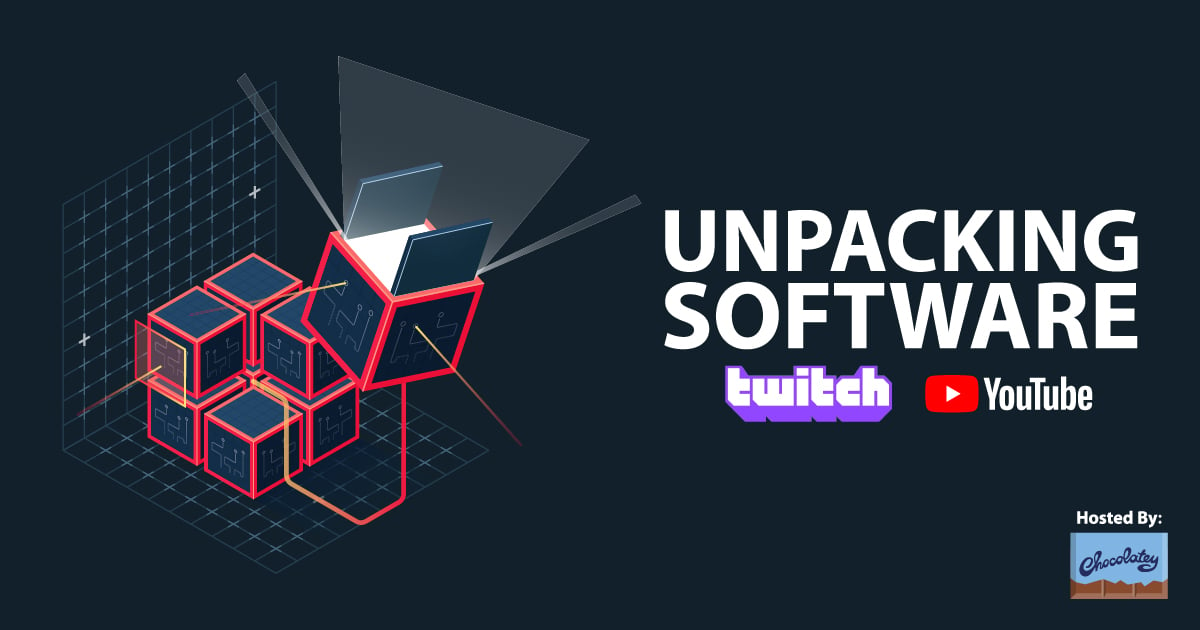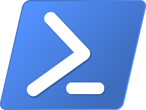
Downloads:
16
Downloads of v 1.0.0:
16
Last Update:
29 Jun 2025
Published Date:
29 Jun 2025
Reviewed Date:
18 Jul 2025
Reviewer:
Package Maintainer(s):
Software Author(s):
- VikiJ462
Tags:
EzNotepad (Install)
(Waiting for Maintainer to take corrective action)
- 1
- 2
- 3
1.0.0 | Updated: 29 Jun 2025
Downloads:
16
Downloads of v 1.0.0:
16
Published:
29 Jun 2025
Reviewed:
18 Jul 2025
Reviewer:
Maintainer(s):
Software Author(s):
- VikiJ462
EzNotepad (Install) 1.0.0
(Waiting for Maintainer to take corrective action)
Legal Disclaimer: Neither this package nor Chocolatey Software, Inc. are affiliated with or endorsed by VikiJ462. The inclusion of VikiJ462 trademark(s), if any, upon this webpage is solely to identify VikiJ462 goods or services and not for commercial purposes.
- 1
- 2
- 3
All Checks are Passing
3 Passing Tests
This version is in moderation and has not yet been approved. This means it doesn't show up under normal search.
- Until approved, you should consider this package version unsafe - it could do very bad things to your system (it probably doesn't but you have been warned, that's why we have moderation).
- This package version can change wildly over the course of moderation until it is approved. If you install it and it later has changes to this version, you will be out of sync with any changes that have been made to the package. Until approved, you should consider that this package version doesn't even exist.
- You cannot install this package under normal scenarios. See How to install package version under moderation for more information.
- There are also no guarantees that it will be approved.
There are versions of this package awaiting moderation (possibly just this one). See the Version History section below.
EzNotepad is a lightweight and user-friendly text editor developed in Python. It offers basic notepad functionalities, making it suitable for quick notes or editing simple text files.
## Summary
How do I create packages? See https://docs.chocolatey.org/en-us/create/create-packages
If you are submitting packages to the community feed (https://community.chocolatey.org)
always try to ensure you have read, understood and adhere to the create
packages wiki link above.
## Automatic Packaging Updates?
Consider making this package an automatic package, for the best
maintainability over time. Read up at https://docs.chocolatey.org/en-us/create/automatic-packages
## Shim Generation
Any executables you include in the package or download (but don't call
install against using the built-in functions) will be automatically shimmed.
This means those executables will automatically be included on the path.
Shim generation runs whether the package is self-contained or uses automation
scripts.
By default, these are considered console applications.
If the application is a GUI, you should create an empty file next to the exe
named 'name.exe.gui' e.g. 'bob.exe' would need a file named 'bob.exe.gui'.
See https://docs.chocolatey.org/en-us/create/create-packages#how-do-i-set-up-shims-for-applications-that-have-a-gui
If you want to ignore the executable, create an empty file next to the exe
named 'name.exe.ignore' e.g. 'bob.exe' would need a file named
'bob.exe.ignore'.
See https://docs.chocolatey.org/en-us/create/create-packages#how-do-i-exclude-executables-from-getting-shims
## Self-Contained?
If you have a self-contained package, you can remove the automation scripts
entirely and just include the executables, they will automatically get shimmed,
which puts them on the path. Ensure you have the legal right to distribute
the application though. See https://docs.chocolatey.org/en-us/information/legal.
You should read up on the Shim Generation section to familiarize yourself
on what to do with GUI applications and/or ignoring shims.
## Automation Scripts
You have a powerful use of Chocolatey, as you are using PowerShell. So you
can do just about anything you need. Choco has some very handy built-in
functions that you can use, these are sometimes called the helpers.
### Built-In Functions
https://docs.chocolatey.org/en-us/create/functions
A note about a couple:
* Get-ToolsLocation - used to get you the 'tools' root, which by default is set to 'c:\tools', not the chocolateyInstall bin folder - see https://docs.chocolatey.org/en-us/create/functions/get-toolslocation
* Install-BinFile - used for non-exe files - executables are automatically shimmed... - see https://docs.chocolatey.org/en-us/create/functions/install-binfile
* Uninstall-BinFile - used for non-exe files - executables are automatically shimmed - see https://docs.chocolatey.org/en-us/create/functions/uninstall-binfile
### Getting package specific information
Use the package parameters pattern - see https://docs.chocolatey.org/en-us/guides/create/parse-packageparameters-argument
### Need to mount an ISO?
https://docs.chocolatey.org/en-us/guides/create/mount-an-iso-in-chocolatey-package
### Environment Variables
Chocolatey makes a number of environment variables available (You can access any of these with $env:TheVariableNameBelow):
* TEMP/TMP - Overridden to the CacheLocation, but may be the same as the original TEMP folder
* ChocolateyInstall - Top level folder where Chocolatey is installed
* ChocolateyPackageName - The name of the package, equivalent to the `<id />` field in the nuspec
* ChocolateyPackageTitle - The title of the package, equivalent to the `<title />` field in the nuspec
* ChocolateyPackageVersion - The normalized version of the package, equivalent to a normalized edition of the `<version />` field in the nuspec
* ChocolateyPackageFolder - The top level location of the package folder - the folder where Chocolatey has downloaded and extracted the NuGet package, typically `C:\ProgramData\chocolatey\lib\packageName`.
#### Advanced Environment Variables
The following are more advanced settings:
* ChocolateyPackageParameters - Parameters to use with packaging, not the same as install arguments (which are passed directly to the native installer). Based on `--package-parameters`.
* CHOCOLATEY_VERSION - The version of Choco you normally see. Use if you are 'lighting' things up based on choco version. Otherwise take a dependency on the specific version you need.
* ChocolateyForceX86 = If available and set to 'true', then user has requested 32bit version. Automatically handled in built in Choco functions.
* OS_PLATFORM - Like Windows, macOS, Linux.
* OS_VERSION - The version of OS, like 10.0 something something for Windows.
* OS_NAME - The reported name of the OS.
* USER_NAME = The user name
* USER_DOMAIN = The user domain name (could also be local computer name)
* IS_PROCESSELEVATED = Is the process elevated?
* IS_SYSTEM = Is the user the system account?
* IS_REMOTEDESKTOP = Is the user in a terminal services session?
* ChocolateyToolsLocation - formerly 'ChocolateyBinRoot' ('ChocolateyBinRoot' will be removed with Chocolatey v2.0.0), this is where tools being installed outside of Chocolatey packaging will go.
#### Set By Options and Configuration
Some environment variables are set based on options that are passed, configuration and/or features that are turned on:
* ChocolateyEnvironmentDebug - Was `--debug` passed? If using the built-in PowerShell host, this is always true (but only logs debug messages to console if `--debug` was passed)
* ChocolateyEnvironmentVerbose - Was `--verbose` passed? If using the built-in PowerShell host, this is always true (but only logs verbose messages to console if `--verbose` was passed).
* ChocolateyExitOnRebootDetected - Are we exiting on a detected reboot? Set by ` --exit-when-reboot-detected` or the feature `exitOnRebootDetected`
* ChocolateyForce - Was `--force` passed?
* ChocolateyForceX86 - Was `-x86` passed?
* ChocolateyRequestTimeout - How long before a web request will time out. Set by config `webRequestTimeoutSeconds`
* ChocolateyResponseTimeout - How long to wait for a download to complete? Set by config `commandExecutionTimeoutSeconds`
* ChocolateyPowerShellHost - Are we using the built-in PowerShell host? Set by `--use-system-powershell` or the feature `powershellHost`
#### Business Edition Variables
* ChocolateyInstallArgumentsSensitive - Encrypted arguments passed from command line `--install-arguments-sensitive` that are not logged anywhere.
* ChocolateyPackageParametersSensitive - Package parameters passed from command line `--package-parameters-sensitive` that are not logged anywhere.
* ChocolateyLicensedVersion - What version is the licensed edition on?
* ChocolateyLicenseType - What edition / type of the licensed edition is installed?
* USER_CONTEXT - The original user context - different when self-service is used (Licensed)
#### Experimental Environment Variables
The following are experimental or use not recommended:
* OS_IS64BIT = This may not return correctly - it may depend on the process the app is running under
* CHOCOLATEY_VERSION_PRODUCT = the version of Choco that may match CHOCOLATEY_VERSION but may be different - based on git describe
* IS_ADMIN = Is the user an administrator? But doesn't tell you if the process is elevated.
* IS_REMOTE = Is the user in a remote session?
#### Not Useful Or Anti-Pattern If Used
* ChocolateyInstallOverride = Not for use in package automation scripts. Based on `--override-arguments` being passed.
* ChocolateyInstallArguments = The installer arguments meant for the native installer. You should use chocolateyPackageParameters instead. Based on `--install-arguments` being passed.
* ChocolateyIgnoreChecksums - Was `--ignore-checksums` passed or the feature `checksumFiles` turned off?
* ChocolateyAllowEmptyChecksums - Was `--allow-empty-checksums` passed or the feature `allowEmptyChecksums` turned on?
* ChocolateyAllowEmptyChecksumsSecure - Was `--allow-empty-checksums-secure` passed or the feature `allowEmptyChecksumsSecure` turned on?
* ChocolateyChecksum32 - Was `--download-checksum` passed?
* ChocolateyChecksumType32 - Was `--download-checksum-type` passed?
* ChocolateyChecksum64 - Was `--download-checksum-x64` passed?
* ChocolateyChecksumType64 - Was `--download-checksum-type-x64` passed?
* ChocolateyPackageExitCode - The exit code of the script that just ran - usually set by `Set-PowerShellExitCode`
* ChocolateyLastPathUpdate - Set by Chocolatey as part of install, but not used for anything in particular in packaging.
* ChocolateyProxyLocation - The explicit proxy location as set in the configuration `proxy`
* ChocolateyDownloadCache - Use available download cache? Set by `--skip-download-cache`, `--use-download-cache`, or feature `downloadCache`
* ChocolateyProxyBypassList - Explicitly set locations to ignore in configuration `proxyBypassList`
* ChocolateyProxyBypassOnLocal - Should the proxy bypass on local connections? Set based on configuration `proxyBypassOnLocal`
* http_proxy - Set by original `http_proxy` passthrough, or same as `ChocolateyProxyLocation` if explicitly set.
* https_proxy - Set by original `https_proxy` passthrough, or same as `ChocolateyProxyLocation` if explicitly set.
* no_proxy- Set by original `no_proxy` passthrough, or same as `ChocolateyProxyBypassList` if explicitly set.
import tkinter as tk
from tkinter import scrolledtext, messagebox, filedialog, simpledialog
import os
class NotepadGUI:
def __init__(self, master):
self.master = master
master.title("Easy Notepad")
master.geometry("800x600")
self.languages = {
"en": {
"title": "Easy Notepad",
"file_menu": "File",
"edit_menu": "Edit",
"language_menu": "Language",
"new_note": "New Note",
"open_note": "Open Note",
"save_note": "Save Note",
"save_as": "Save As...",
"delete_note": "Delete Note",
"exit": "Exit",
"show_line_numbers": "Show Line Numbers",
"hide_line_numbers": "Hide Line Numbers",
"note_title": "Note Title",
"enter_title": "Enter the title for your note:",
"note_saved_success": "Note '{title}' saved successfully!",
"note_deleted_success": "Note '{title}' deleted successfully!",
"note_not_found": "Note not found!",
"no_note_open": "No note is currently open.",
"save_changes_prompt": "Do you want to save changes to the current note?",
"untitled": "Untitled",
"all_files": "All Files",
"text_files": "Text Files",
"error": "Error",
"warning": "Warning",
"about": "About",
"about_message": "Easy Notepad\nVersion 1.0\nCreated with Tkinter",
},
"cs": {
"title": "Snadný Poznámkový Blok",
"file_menu": "Soubor",
"edit_menu": "Úpravy",
"language_menu": "Jazyk",
"new_note": "Nový Zápisek",
"open_note": "Otevřít Zápisek",
"save_note": "Uložit Zápisek",
"save_as": "Uložit jako...",
"delete_note": "Smazat Zápisek",
"exit": "Ukončit",
"show_line_numbers": "Zobrazit Čísla Řádků",
"hide_line_numbers": "Skrýt Čísla Řádků",
"note_title": "Název Zápisku",
"enter_title": "Zadejte název pro váš zápisek:",
"note_saved_success": "Zápisek '{title}' byl úspěšně uložen!",
"note_deleted_success": "Zápisek '{title}' byl úspěšně smazán!",
"note_not_found": "Zápisek nenalezen!",
"no_note_open": "Momentálně není otevřen žádný zápisek.",
"save_changes_prompt": "Chcete uložit změny do aktuálního zápisku?",
"untitled": "Bezejmenný",
"all_files": "Všechny soubory",
"text_files": "Textové soubory",
"error": "Chyba",
"warning": "Upozornění",
"about": "O aplikaci",
"about_message": "Snadný Poznámkový Blok\nVerze 1.0\nVytvořeno pomocí Tkinter",
},
"es": {
"title": "Bloc de Notas Fácil",
"file_menu": "Archivo",
"edit_menu": "Editar",
"language_menu": "Idioma",
"new_note": "Nueva Nota",
"open_note": "Abrir Nota",
"save_note": "Guardar Nota",
"save_as": "Guardar como...",
"delete_note": "Eliminar Nota",
"exit": "Salir",
"show_line_numbers": "Mostrar Números de Línea",
"hide_line_numbers": "Ocultar Números de Línea",
"note_title": "Título de la Nota",
"enter_title": "Ingrese el título para su nota:",
"note_saved_success": "¡Nota '{title}' guardada exitosamente!",
"note_deleted_success": "¡Nota '{title}' eliminada exitosamente!",
"note_not_found": "¡Nota no encontrada!",
"no_note_open": "Actualmente no hay ninguna nota abierta.",
"save_changes_prompt": "¿Desea guardar los cambios en la nota actual?",
"untitled": "Sin título",
"all_files": "Todos los archivos",
"text_files": "Archivos de texto",
"error": "Error",
"warning": "Advertencia",
"about": "Acerca de",
"about_message": "Bloc de Notas Fácil\nVersión 1.0\nCreado con Tkinter",
},
"de": {
"title": "Einfacher Notizblock",
"file_menu": "Datei",
"edit_menu": "Bearbeiten",
"language_menu": "Sprache",
"new_note": "Neue Notiz",
"open_note": "Notiz Öffnen",
"save_note": "Notiz Speichern",
"save_as": "Speichern unter...",
"delete_note": "Notiz Löschen",
"exit": "Beenden",
"show_line_numbers": "Zeilennummern Anzeigen",
"hide_line_numbers": "Zeilennummern Ausblenden",
"note_title": "Notiztitel",
"enter_title": "Geben Sie den Titel für Ihre Notiz ein:",
"note_saved_success": "Notiz '{title}' erfolgreich gespeichert!",
"note_deleted_success": "Notiz '{title}' erfolgreich gelöscht!",
"note_not_found": "Notiz nicht gefunden!",
"no_note_open": "Derzeit ist keine Notiz geöffnet.",
"save_changes_prompt": "Möchten Sie die Änderungen an der aktuellen Notiz speichern?",
"untitled": "Unbenannt",
"all_files": "Alle Dateien",
"text_files": "Textdateien",
"error": "Fehler",
"warning": "Warnung",
"about": "Über",
"about_message": "Einfacher Notizblock\nVersion 1.0\nErstellt mit Tkinter",
},
"uk": {
"title": "Легкий Блокнот",
"file_menu": "Файл",
"edit_menu": "Редагувати",
"language_menu": "Мова",
"new_note": "Нова Нотатка",
"open_note": "Відкрити Нотатку",
"save_note": "Зберегти Нотатку",
"save_as": "Зберегти як...",
"delete_note": "Видалити Нотатку",
"exit": "Вихід",
"show_line_numbers": "Показати Номери Рядків",
"hide_line_numbers": "Приховати Номери Рядків",
"note_title": "Назва Нотатки",
"enter_title": "Введіть назву для вашої нотатки:",
"note_saved_success": "Нотатка '{title}' успішно збережена!",
"note_deleted_success": "Нотатка '{title}' успішно видалена!",
"note_not_found": "Нотатка не знайдена!",
"no_note_open": "Наразі жодна нотатка не відкрита.",
"save_changes_prompt": "Ви хочете зберегти зміни в поточній нотатці?",
"untitled": "Без назви",
"all_files": "Усі файли",
"text_files": "Текстові файли",
"error": "Помилка",
"warning": "Попередження",
"about": "Про програму",
"about_message": "Легкий Блокнот\nВерсія 1.0\nСтворено за допомогою Tkinter",
},
"zh": {
"title": "简易记事本",
"file_menu": "文件",
"edit_menu": "编辑",
"language_menu": "语言",
"new_note": "新建笔记",
"open_note": "打开笔记",
"save_note": "保存笔记",
"save_as": "另存为...",
"delete_note": "删除笔记",
"exit": "退出",
"show_line_numbers": "显示行号",
"hide_line_numbers": "隐藏行号",
"note_title": "笔记标题",
"enter_title": "请输入笔记标题:",
"note_saved_success": "笔记“{title}”保存成功!",
"note_deleted_success": "笔记“{title}”删除成功!",
"note_not_found": "未找到笔记!",
"no_note_open": "当前没有打开的笔记。",
"save_changes_prompt": "是否保存当前笔记的更改?",
"untitled": "无标题",
"all_files": "所有文件",
"text_files": "文本文件",
"error": "错误",
"warning": "警告",
"about": "关于",
"about_message": "简易记事本\n版本 1.0\n使用 Tkinter 创建",
},
"ja": {
"title": "簡易メモ帳",
"file_menu": "ファイル",
"edit_menu": "編集",
"language_menu": "言語",
"new_note": "新規メモ",
"open_note": "メモを開く",
"save_note": "メモを保存",
"save_as": "名前を付けて保存...",
"delete_note": "メモを削除",
"exit": "終了",
"show_line_numbers": "行番号を表示",
"hide_line_numbers": "行番号を非表示",
"note_title": "メモのタイトル",
"enter_title": "メモのタイトルを入力してください:",
"note_saved_success": "メモ「{title}」が正常に保存されました!",
"note_deleted_success": "メモ「{title}」が正常に削除されました!",
"note_not_found": "メモが見つかりません!",
"no_note_open": "現在開いているメモはありません。",
"save_changes_prompt": "現在のメモへの変更を保存しますか?",
"untitled": "無題",
"all_files": "すべてのファイル",
"text_files": "テキストファイル",
"error": "エラー",
"warning": "警告",
"about": "について",
"about_message": "簡易メモ帳\nバージョン 1.0\nTkinterで作成",
},
}
self.current_language = "en"
self.current_note_path = None
self.text_widget_modified = False
self.master.protocol("WM_DELETE_WINDOW", self.on_closing)
# Main frame
self.main_frame = tk.Frame(master)
self.main_frame.pack(fill=tk.BOTH, expand=1)
# Line numbers canvas
self.line_numbers_canvas = tk.Canvas(self.main_frame, width=30, bg="lightgray")
self.line_numbers_canvas.pack(side=tk.LEFT, fill=tk.Y)
self.show_line_numbers_var = tk.BooleanVar(value=True)
# Text area
self.text_area = scrolledtext.ScrolledText(self.main_frame, wrap="word", undo=True)
self.text_area.pack(side=tk.RIGHT, fill=tk.BOTH, expand=1)
self.text_area.bind("<KeyRelease>", self.on_text_change)
self.text_area.bind("<MouseWheel>", self._scroll_text_and_lines)
self.text_area.bind("<Button-4>", self._scroll_text_and_lines) # For Linux
self.text_area.bind("<Button-5>", self._scroll_text_and_lines) # For Linux
self.text_area.vbar.config(command=self._scroll_line_numbers)
self.line_numbers_canvas.bind("<Configure>", self._redraw_line_numbers)
self.create_menu()
self.update_ui_texts()
self._redraw_line_numbers()
def get_text(self, key):
return self.languages[self.current_language].get(key, key)
def update_ui_texts(self):
self.master.title(self.get_text("title"))
self.file_menu.entryconfig(0, label=self.get_text("new_note"))
self.file_menu.entryconfig(1, label=self.get_text("open_note"))
self.file_menu.entryconfig(2, label=self.get_text("save_note"))
self.file_menu.entryconfig(3, label=self.get_text("save_as"))
self.file_menu.entryconfig(5, label=self.get_text("delete_note"))
self.file_menu.entryconfig(7, label=self.get_text("exit"))
self.edit_menu.entryconfig(0, label=self.get_text("show_line_numbers") if not self.show_line_numbers_var.get() else self.get_text("hide_line_numbers"))
self.main_menu.entryconfig(1, label=self.get_text("file_menu"))
self.main_menu.entryconfig(2, label=self.get_text("edit_menu"))
self.main_menu.entryconfig(3, label=self.get_text("language_menu"))
def create_menu(self):
self.main_menu = tk.Menu(self.master)
self.master.config(menu=self.main_menu)
self.file_menu = tk.Menu(self.main_menu, tearoff=0)
self.main_menu.add_cascade(label="File", menu=self.file_menu)
self.file_menu.add_command(label="New Note", command=self.new_note)
self.file_menu.add_command(label="Open Note", command=self.open_note)
self.file_menu.add_command(label="Save Note", command=self.save_note)
self.file_menu.add_command(label="Save As...", command=self.save_note_as)
self.file_menu.add_separator()
self.file_menu.add_command(label="Delete Note", command=self.delete_note)
self.file_menu.add_separator()
self.file_menu.add_command(label="Exit", command=self.on_closing)
self.edit_menu = tk.Menu(self.main_menu, tearoff=0)
self.main_menu.add_cascade(label="Edit", menu=self.edit_menu)
self.edit_menu.add_command(label="Show Line Numbers", command=self.toggle_line_numbers)
self.edit_menu.add_separator()
self.edit_menu.add_command(label="About", command=self.show_about)
self.language_menu = tk.Menu(self.main_menu, tearoff=0)
self.main_menu.add_cascade(label="Language", menu=self.language_menu)
for lang_code, lang_data in self.languages.items():
self.language_menu.add_command(label=lang_data["title"].split(" ")[-1] if " " in lang_data["title"] else lang_data["title"], command=lambda code=lang_code: self.change_language(code))
def on_text_change(self, event=None):
self.text_widget_modified = True
self._redraw_line_numbers()
def _redraw_line_numbers(self, event=None):
if not self.show_line_numbers_var.get():
self.line_numbers_canvas.pack_forget()
return
else:
self.line_numbers_canvas.pack(side=tk.LEFT, fill=tk.Y)
self.line_numbers_canvas.delete("all")
i = self.text_area.index("@0,0")
while True:
dline = self.text_area.dlineinfo(i)
if dline is None:
break
y = dline[1]
line_num = str(int(float(i)))
self.line_numbers_canvas.create_text(2, y, anchor="nw", text=line_num, font=("Consolas", 10))
i = self.text_area.index("%s+1line" % i)
def _scroll_line_numbers(self, *args):
self.text_area.yview(*args)
self._redraw_line_numbers()
def _scroll_text_and_lines(self, event):
self.text_area.yview_scroll(-1 * (event.delta // 120), "units")
self._redraw_line_numbers()
return "break" # Prevents default scroll behavior if needed
def toggle_line_numbers(self):
self.show_line_numbers_var.set(not self.show_line_numbers_var.get())
if self.show_line_numbers_var.get():
self.line_numbers_canvas.pack(side=tk.LEFT, fill=tk.Y)
self._redraw_line_numbers()
self.edit_menu.entryconfig(0, label=self.get_text("hide_line_numbers"))
else:
self.line_numbers_canvas.pack_forget()
self.edit_menu.entryconfig(0, label=self.get_text("show_line_numbers"))
def new_note(self):
if self.text_widget_modified:
if messagebox.askyesno(self.get_text("warning"), self.get_text("save_changes_prompt")):
self.save_note()
self.text_area.delete(1.0, tk.END)
self.current_note_path = None
self.text_widget_modified = False
self.master.title(self.get_text("untitled") + " - " + self.get_text("title"))
self._redraw_line_numbers()
def open_note(self):
if self.text_widget_modified:
if messagebox.askyesno(self.get_text("warning"), self.get_text("save_changes_prompt")):
self.save_note()
file_path = filedialog.askopenfilename(
defaultextension=".txt",
filetypes=[
(self.get_text("text_files"), "*.txt"),
(self.get_text("all_files"), "*.*")
]
)
if file_path:
try:
with open(file_path, "r", encoding="utf-8") as file:
content = file.read()
self.text_area.delete(1.0, tk.END)
self.text_area.insert(tk.END, content)
self.current_note_path = file_path
self.text_widget_modified = False
self.master.title(os.path.basename(file_path) + " - " + self.get_text("title"))
self._redraw_line_numbers()
except Exception as e:
messagebox.showerror(self.get_text("error"), f"Failed to open file: {e}")
def save_note(self):
if self.current_note_path:
try:
with open(self.current_note_path, "w", encoding="utf-8") as file:
file.write(self.text_area.get(1.0, tk.END))
messagebox.showinfo(self.get_text("title"), self.get_text("note_saved_success").format(title=os.path.basename(self.current_note_path)))
self.text_widget_modified = False
except Exception as e:
messagebox.showerror(self.get_text("error"), f"Failed to save file: {e}")
else:
self.save_note_as()
def save_note_as(self):
file_path = filedialog.asksaveasfilename(
defaultextension=".txt",
filetypes=[
(self.get_text("text_files"), "*.txt"),
(self.get_text("all_files"), "*.*")
]
)
if file_path:
try:
with open(file_path, "w", encoding="utf-8") as file:
file.write(self.text_area.get(1.0, tk.END))
self.current_note_path = file_path
messagebox.showinfo(self.get_text("title"), self.get_text("note_saved_success").format(title=os.path.basename(file_path)))
self.text_widget_modified = False
self.master.title(os.path.basename(file_path) + " - " + self.get_text("title"))
except Exception as e:
messagebox.showerror(self.get_text("error"), f"Failed to save file: {e}")
def delete_note(self):
if not self.current_note_path:
messagebox.showinfo(self.get_text("warning"), self.get_text("no_note_open"))
return
note_title = os.path.basename(self.current_note_path)
if messagebox.askyesno(self.get_text("warning"), f"Are you sure you want to delete '{note_title}'?"):
try:
os.remove(self.current_note_path)
messagebox.showinfo(self.get_text("title"), self.get_text("note_deleted_success").format(title=note_title))
self.new_note() # Clear the text area after deletion
except OSError:
messagebox.showerror(self.get_text("error"), self.get_text("note_not_found"))
except Exception as e:
messagebox.showerror(self.get_text("error"), f"Failed to delete note: {e}")
def change_language(self, lang_code):
self.current_language = lang_code
self.update_ui_texts()
# Update the title in case a note is open
if self.current_note_path:
self.master.title(os.path.basename(self.current_note_path) + " - " + self.get_text("title"))
else:
self.master.title(self.get_text("untitled") + " - " + self.get_text("title"))
def show_about(self):
messagebox.showinfo(self.get_text("about"), self.get_text("about_message"))
def on_closing(self):
if self.text_widget_modified:
if messagebox.askyesno(self.get_text("warning"), self.get_text("save_changes_prompt")):
self.save_note()
self.master.destroy()
def main():
root = tk.Tk()
app = NotepadGUI(root)
root.mainloop()
if __name__ == "__main__":
main()# This runs before upgrade or uninstall.
# Use this file to do things like stop services prior to upgrade or uninstall.
# NOTE: It is an anti-pattern to call chocolateyUninstall.ps1 from here. If you
# need to uninstall an MSI prior to upgrade, put the functionality in this
# file without calling the uninstall script. Make it idempotent in the
# uninstall script so that it doesn't fail when it is already uninstalled.
# NOTE: For upgrades - like the uninstall script, this script always runs from
# the currently installed version, not from the new upgraded package version.
$shortcutPath = "$env:ProgramData\Microsoft\Windows\Start Menu\Programs\EzNotepad.lnk"
if (Test-Path $shortcutPath) {
Remove-Item $shortcutPath -Force
}
Note: Include this file if including binaries you have the right to distribute.
Otherwise delete. this file.
===DELETE ABOVE THIS LINE AND THIS LINE===
From: <insert applicable license url here>
LICENSE
<Insert License Here>
Note: Include this file if including binaries you have the right to distribute.
Otherwise delete. this file. If you are the software author, you can mention
this.
===DELETE ABOVE THIS LINE AND THIS LINE===
VERIFICATION
Verification is intended to assist the Chocolatey moderators and community
in verifying that this package's contents are trustworthy.
<Include details of how to verify checksum contents>
<If software vendor, explain that here>TODO
1. Determine Package Use:
Organization? Internal Use? - You are not subject to distribution
rights when you keep everything internal. Put the binaries directly
into the tools directory (as long as total nupkg size is under 1GB).
When bigger, look to use from a share or download binaries from an
internal location. Embedded binaries makes for the most reliable use
of Chocolatey. Use `$fileLocation` (`$file`/`$file64`) and
`Install-ChocolateyInstallPackage`/`Get-ChocolateyUnzip` in
tools\chocolateyInstall.ps1.
You can also choose to download from internal urls, see the next
section, but ignore whether you have distribution rights or not, it
doesn't apply. Under no circumstances should download from the
internet, it is completely unreliable. See
https://docs.chocolatey.org/en-us/community-repository/community-packages-disclaimer
to understand the limitations of a publicly available repository.
Community Repository?
Have Distribution Rights?
If you are the software vendor OR the software EXPLICITLY allows
redistribution and the total nupkg size will be under 200MB, you
have the option to embed the binaries directly into the package to
provide the most reliable install experience. Put the binaries
directly into the tools folder, use `$fileLocation` (`$file`/
`$file64`) and `Install-ChocolateyInstallPackage`/
`Get-ChocolateyUnzip` in tools\chocolateyInstall.ps1. Additionally,
fill out the LICENSE and VERIFICATION file (see 3 below and those
files for specifics).
NOTE: You can choose to download binaries at runtime, but be sure
the download location will remain stable. See the next section.
Do Not Have Distribution Rights?
- Note: Packages built this way cannot be 100% reliable, but it's a
constraint of publicly available packages and there is little
that can be done to change that. See
https://docs.chocolatey.org/en-us/community-repository/community-packages-disclaimer
to better understand the limitations of a publicly available
repository.
Download Location is Publicly Available?
You will need to download the runtime files from their official
location at runtime. Use `$url`/`$url64` and
`Install-ChocolateyPackage`/`Install-ChocolateyZipPackage` in
tools\chocolateyInstall.ps1.
Download Location is Not Publicly Available?
Stop here, you can't push this to the community repository. You
can ask the vendor for permission to embed, then include a PDF of
that signed permission directly in the package. Otherwise you
will need to seek alternate locations to non-publicly host the
package.
Download Location Is Same For All Versions?
You still need to point to those urls, but you may wish to set up
something like Automatic Updater (AU) so that when a new version
of the software becomes available, the new package version
automatically gets pushed up to the community repository. See
https://docs.chocolatey.org/en-us/create/automatic-packages#automatic-updater-au
2. Determine Package Type:
- Installer Package - contains an installer (everything in template is
geared towards this type of package)
- Zip Package - downloads or embeds and unpacks archives, may unpack
and run an installer using `Install-ChocolateyInstallPackage` as a
secondary step.
- Portable Package - Contains runtime binaries (or unpacks them as a
zip package) - cannot require administrative permissions to install
or use
- Config Package - sets config like files, registry keys, etc
- Extension Package - Packages that add PowerShell functions to
Chocolatey - https://docs.chocolatey.org/en-us/features/extensions
- Template Package - Packages that add templates like this for `choco
new -t=name` - https://docs.chocolatey.org/en-us/guides/create/create-custom-package-templates
- Other - there are other types of packages as well, these are the main
package types seen in the wild
3. Fill out the package contents:
- tools\chocolateyBeforeModify.ps1 - remove if you have no processes
or services to shut down before upgrade/uninstall
- tools\LICENSE.txt / tools\VERIFICATION.txt - Remove if you are not
embedding binaries. Keep and fill out if you are embedding binaries
in the package AND pushing to the community repository, even if you
are the author of software. The file becomes easier to fill out
(does not require changes each version) if you are the software
vendor. If you are building packages for internal use (organization,
etc), you don't need these files as you are not subject to
distribution rights internally.
- tools\chocolateyUninstall.ps1 - remove if autouninstaller can
automatically uninstall and you have nothing additional to do during
uninstall
- Readme.txt - delete this file once you have read over and used
anything you've needed from here
- nuspec - fill this out, then clean out all the comments (you may wish
to leave the headers for the package vs software metadata)
- tools\chocolateyInstall.ps1 - instructions in next section.
4. ChocolateyInstall.ps1:
- For embedded binaries - use `$fileLocation` (`$file`/`$file64`) and
`Install-ChocolateyInstallPackage`/ `Get-ChocolateyUnzip`.
- Downloading binaries at runtime - use `$url`/`$url64` and
`Install-ChocolateyPackage` / `Install-ChocolateyZipPackage`.
- Other needs (creating files, setting registry keys), use regular
PowerShell to do so or see if there is a function already defined:
https://docs.chocolatey.org/en-us/create/functions
- There may also be functions available in extension packages, see
https://community.chocolatey.org/packages?q=id%3A.extension for examples and
availability.
- Clean out the comments and sections you are not using.
5. Test the package to ensure install/uninstall work appropriately.
There is a test environment you can use for this -
https://github.com/chocolatey/chocolatey-test-environment
6. Learn more about Chocolatey packaging - go through the workshop at
https://github.com/chocolatey/chocolatey-workshop
You will learn about
- General packaging
- Customizing package behavior at runtime (package parameters)
- Extension packages
- Custom packaging templates
- Setting up an internal Chocolatey.Server repository
- Adding and using internal repositories
- Reporting
- Advanced packaging techniques when installers are not friendly to
automation
7. Delete this file.
Log in or click on link to see number of positives.
- eznotepad.1.0.0.nupkg (5c6906d4964a) - ## / 67
In cases where actual malware is found, the packages are subject to removal. Software sometimes has false positives. Moderators do not necessarily validate the safety of the underlying software, only that a package retrieves software from the official distribution point and/or validate embedded software against official distribution point (where distribution rights allow redistribution).
Chocolatey Pro provides runtime protection from possible malware.
Initial public release. Added core notepad features and stable Python integration.
This package has no dependencies.
Ground Rules:
- This discussion is only about EzNotepad (Install) and the EzNotepad (Install) package. If you have feedback for Chocolatey, please contact the Google Group.
- This discussion will carry over multiple versions. If you have a comment about a particular version, please note that in your comments.
- The maintainers of this Chocolatey Package will be notified about new comments that are posted to this Disqus thread, however, it is NOT a guarantee that you will get a response. If you do not hear back from the maintainers after posting a message below, please follow up by using the link on the left side of this page or follow this link to contact maintainers. If you still hear nothing back, please follow the package triage process.
- Tell us what you love about the package or EzNotepad (Install), or tell us what needs improvement.
- Share your experiences with the package, or extra configuration or gotchas that you've found.
- If you use a url, the comment will be flagged for moderation until you've been whitelisted. Disqus moderated comments are approved on a weekly schedule if not sooner. It could take between 1-5 days for your comment to show up.









 Ansible
Ansible

 PS DSC
PS DSC


Mega1Ez1Apps (maintainer) on 28 Jun 2025 15:06:56 +00:00:
User 'Mega1Ez1Apps' (maintainer) submitted package.
chocolatey-ops (reviewer) on 28 Jun 2025 15:41:18 +00:00:
eznotepad has failed automated validation.
Requirements
Requirements represent the minimum quality of a package that is acceptable. When a package version has failed requirements, the package version requires fixing and/or response by the maintainer. Provided a Requirement has flagged correctly, it must be fixed before the package version can be approved. The exact same version should be uploaded during moderation review.
Guidelines
Guidelines are strong suggestions that improve the quality of a package version. These are considered something to fix for next time to increase the quality of the package. Over time Guidelines can become Requirements. A package version can be approved without addressing Guideline comments but will reduce the quality of the package.
Suggestions
Suggestions are either newly introduced items that will later become Guidelines or items that are don't carry enough weight to become a Guideline. Either way they should be considered. A package version can be approved without addressing Suggestion comments.
Notes
Notes typically flag things for both you and the reviewer to go over. Sometimes this is the use of things that may or may not be necessary given the constraints of what you are trying to do and/or are harder for automation to flag for other reasons. Items found in Notes might be Requirements depending on the context. A package version can be approved without addressing Note comments.
Mega1Ez1Apps (maintainer) on 29 Jun 2025 05:36:59 +00:00:
User 'Mega1Ez1Apps' (maintainer) submitted package.
chocolatey-ops (reviewer) on 29 Jun 2025 06:09:20 +00:00:
eznotepad has passed automated validation. It may have or may still fail other checks like testing (verification).
NOTE: No required changes that the validator checks have been flagged! It is appreciated if you fix other items, but only Requirements will hold up a package version from approval. A human review could still turn up issues a computer may not easily find.
Guidelines
Guidelines are strong suggestions that improve the quality of a package version. These are considered something to fix for next time to increase the quality of the package. Over time Guidelines can become Requirements. A package version can be approved without addressing Guideline comments but will reduce the quality of the package.
packageSourceUrl, pointing to the url where the package source resides. This is a strong guideline because it simplifies collaboration. Please add it to the nuspec. More...Notes
Notes typically flag things for both you and the reviewer to go over. Sometimes this is the use of things that may or may not be necessary given the constraints of what you are trying to do and/or are harder for automation to flag for other reasons. Items found in Notes might be Requirements depending on the context. A package version can be approved without addressing Note comments.
chocolatey-ops (reviewer) on 29 Jun 2025 06:21:16 +00:00:
eznotepad has passed automated package testing (verification). The next step in the process is package scanning.
Please visit https://gist.github.com/choco-bot/1ccd79cdc4c1d5ecbf9311006dbd9a62 for details.
This is an FYI only. There is no action you need to take.
chocolatey-ops (reviewer) on 29 Jun 2025 06:31:51 +00:00:
eznotepad has passed automated virus scanning.
flcdrg (reviewer) on 18 Jul 2025 04:24:40 +00:00:
Please resolve these to allow this package to be approved:
tools\VERIFICATION.txtshould contain instructions on how the user can independently verify that the embedded file is the same as available for download from the original site.tools\LICENSE.txtshould contain the text of the software license. This must also permit redistribution for the software to be embedded in the package.tools\chocolateybeforemodify.ps1as it isn't being usedReadMe.mdAlso, if possible:
packageSourceUrlto point to where the package source residesdocsUrl,mailingListUrl,bugTrackerUrland/orprojectSourceUrlwith appropriate links.thanks,
David